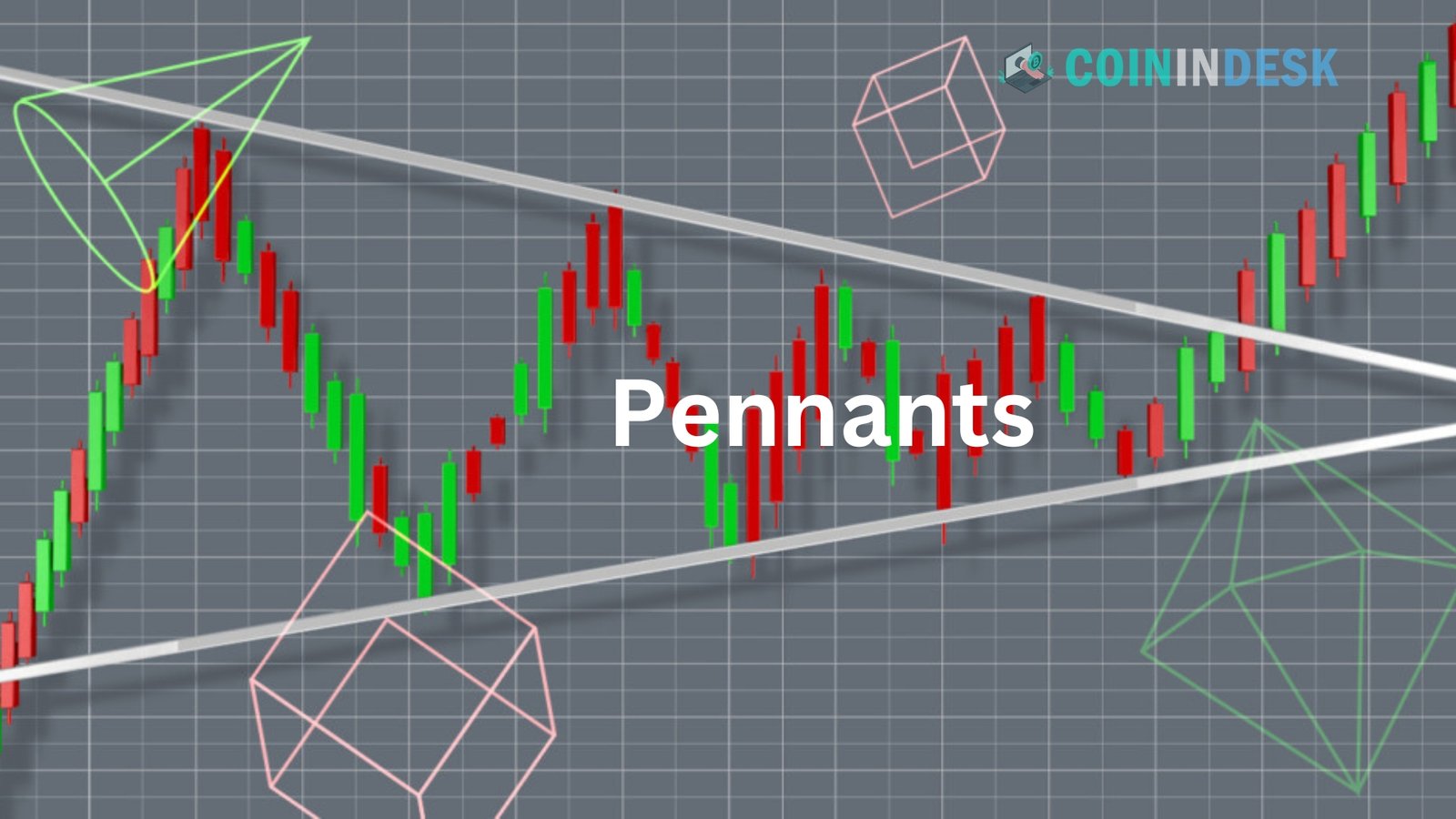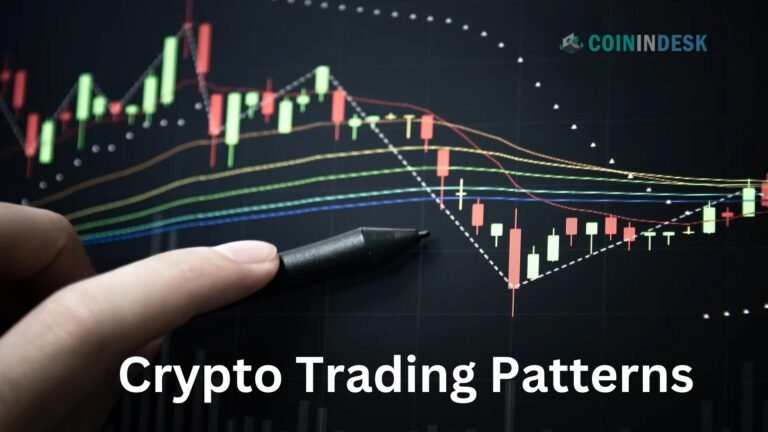Crypto Trading Patterns: Gaining insight into trading trends can greatly improve a trader’s capacity to make well-informed judgments in the ever-changing and frequently unpredictable cryptocurrency market. In this article, learn about the most important crypto trading patterns, why they matter, and how to use them.
What Are Trading Patterns?
Looking at price charts of different assets over time, you can see how their movements establish trading patterns. Cryptocurrency traders can use these patterns to their advantage by looking at past data to predict possible price changes. There are two primary patterns: reversal patterns, which indicate a possible shift in market direction, and continuation patterns, which indicate that the present trend will continue following a consolidation phase.
Flags, pennants, and triangles are common continuation patterns; head and shoulders, double tops and bottoms, and the cup and handle are examples of reversal patterns. By learning to spot these trends, traders can improve their trading techniques by entering and exiting trades at optimal times. While trading patterns offer useful information, they are most effective when combined with other market analysis and technical indicators.
Types of Crypto Trading Patterns
There are two main categories of trading patterns: continuation patterns and reversal patterns. Each serves a unique purpose in market analysis.
Continuation Patterns
Continuation patterns suggest that the current trend will continue after a brief period of consolidation. Here are some of the most common continuation patterns in crypto trading:
Flags
A flag is defined as a sudden change in price followed by a rectangular or parallelogram-shaped consolidation period. Once we reach this stage, we usually see a price breakout in the opposite direction of the previous trend. Depending on whether they’re following a rising or falling trend, flags might be seen as either bullish or bearish.
Pennants
Pennants, like flags, are formed when there is a significant price fluctuation followed by consolidation, which makes a little symmetrical triangle. After a price breaks out of a triangle, it usually keeps moving like it was before. In most cases, pennants produced after a price increase indicate bullish sentiment, whereas pennants formed after a price decline indicate pessimistic sentiment.
Triangles
Triangle designs can take on a symmetrical, ascending, or descending shape. Ascending triangles indicate bullish continuance, whereas falling triangles suggest bearish trends. Symmetrical triangles can signal a possible breakthrough in either direction. Before making any trades, traders should wait for a breakout to occur.
Reversal Patterns
It is possible to tell when a trend is about to alter by looking for reversal patterns in the market. The head and shoulders pattern, which indicates a negative reversal following a bullish trend, is one of the key patterns. Another form, the cup and handle, indicates that the bullish trend will continue. When the price peaks twice, it signals a bearish reversal.
Head and Shoulders
A well-known reversal pattern is the head-and-shoulders formation. It has three distinct peaks: the head, which is at the highest point, and the shoulders, which are at the lowest. An inverse head and shoulders pattern could sign a possible bullish reversal. A breakout over the neckline is generally seen as confirmation by traders.
Double Tops and Bottoms
The price makes it to a high level twice without breaking through, forming a double top. In most cases, this pattern heralds a turn for the worse. On the flip side, a double bottom indicates that the price has hit twice the same level of support, which could indicate a bullish turnaround.
Cup and Handle
A cup with a handle is the visual inspiration for the cup and handle motif. Usually, it means that the bullish trend will continue. The cup symbolizes a rounded bottom, and the handle is formed following a small price reduction. You can consider buying when the price exceeds the handle’s resistance level.
Utilizing Trading Patterns in Crypto Trading
Recognizing trading patterns is the first step; successfully implementing this knowledge requires a solid trading strategy. Here are some tips for effectively using trading patterns:
Combine with Other Indicators
Trading patterns are helpful, but you can’t rely on them only. Patterns can be used with other technical indicators to improve prediction accuracy. These indicators include moving averages, RSI, and MACD.
Risk Management
When dealing with a market as unpredictable as cryptocurrencies, it is essential to have adequate risk management. Set stop-loss orders to protect yourself from suffering big losses, and calculate the size of your positions based on how much risk you are willing to take.
Practice with Paper Trading
Before putting into action trading methods based on patterns, consider practising paper trading a good idea. Traders can replicate trades without taking any financial risk, allowing them to develop their skills and gain confidence in recognising patterns.
Stay Informed
The cryptocurrency market is affected by several factors, such as recent news events, fluctuations in governmental policies, and market sentiment. If traders keep themselves updated about these issues, they will be better able to anticipate probable market swings and adjust their methods accordingly.
Further Read: Best Crypto for Staking in 2024: Top Picks for Passive Income
In summary
To succeed in the ever-changing cryptocurrency market, traders must be familiar with crypto trading patterns. By seeing and understanding these patterns, traders can make smart judgments that fit their trading strategy. The most important thing is to combine continuation patterns with thorough trading strategies and excellent risk management to ride current trends or forecast market moves using reversal patterns. One needs practice and a thirst for knowledge to succeed in the ever-changing crypto market, just like any other trading activity.
FAQs
Q1: What are the most common crypto trading patterns?
The most common crypto trading patterns include continuation patterns like flags, pennants, and triangles, as well as reversal patterns such as head and shoulders, double tops and bottoms, and the cup and handle. Recognizing these patterns can help traders predict potential price movements.
Q2: How can I use trading patterns to improve my trading strategy?
To improve your trading strategy with patterns, combine them with other technical indicators (like moving averages or RSI), practice risk management (such as setting stop-loss orders), and continuously educate yourself about market trends. Analyzing patterns with broader market conditions can lead to more informed trading decisions.
Q3: Are trading patterns reliable indicators for crypto trading?
While trading patterns can provide valuable insights into potential market movements, they are not foolproof. They should be used with other indicators and market analysis to enhance their reliability. Consider external factors influencing price movements, such as news events or regulatory changes.
Q4: How can beginners start recognizing trading patterns in cryptocurrency?
Beginners can start recognizing trading patterns by studying price charts and using technical analysis tools available on trading platforms. It’s helpful to familiarize yourself with common patterns through practice, education, and using paper trading accounts to simulate trades without financial risk.


